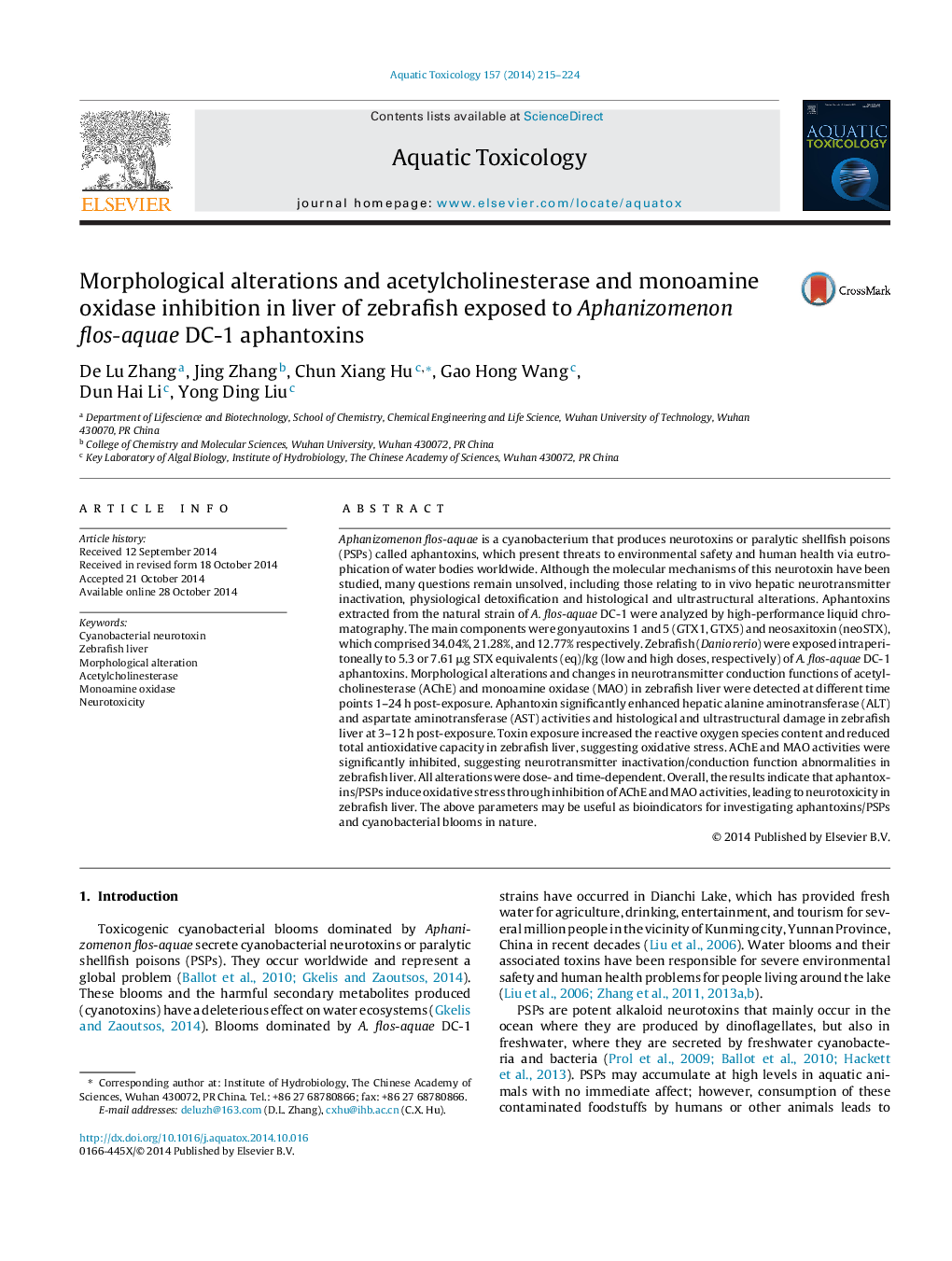| Article ID | Journal | Published Year | Pages | File Type |
|---|---|---|---|---|
| 4529310 | Aquatic Toxicology | 2014 | 10 Pages |
•Aphantoxins induced zebrafish hepatic physiological and morphological changes.•AChE and MAO inhibition reflected abnormality of neurotransmitter inactivation.•ROS advance and T-AOC reduction suggested oxidative stress.•ALT, AST, histological and ultrastructural alterations indicated hepatic damage.
Aphanizomenon flos-aquae is a cyanobacterium that produces neurotoxins or paralytic shellfish poisons (PSPs) called aphantoxins, which present threats to environmental safety and human health via eutrophication of water bodies worldwide. Although the molecular mechanisms of this neurotoxin have been studied, many questions remain unsolved, including those relating to in vivo hepatic neurotransmitter inactivation, physiological detoxification and histological and ultrastructural alterations. Aphantoxins extracted from the natural strain of A. flos-aquae DC-1 were analyzed by high-performance liquid chromatography. The main components were gonyautoxins 1 and 5 (GTX1, GTX5) and neosaxitoxin (neoSTX), which comprised 34.04%, 21.28%, and 12.77% respectively. Zebrafish (Danio rerio) were exposed intraperitoneally to 5.3 or 7.61 μg STX equivalents (eq)/kg (low and high doses, respectively) of A. flos-aquae DC-1 aphantoxins. Morphological alterations and changes in neurotransmitter conduction functions of acetylcholinesterase (AChE) and monoamine oxidase (MAO) in zebrafish liver were detected at different time points 1–24 h post-exposure. Aphantoxin significantly enhanced hepatic alanine aminotransferase (ALT) and aspartate aminotransferase (AST) activities and histological and ultrastructural damage in zebrafish liver at 3–12 h post-exposure. Toxin exposure increased the reactive oxygen species content and reduced total antioxidative capacity in zebrafish liver, suggesting oxidative stress. AChE and MAO activities were significantly inhibited, suggesting neurotransmitter inactivation/conduction function abnormalities in zebrafish liver. All alterations were dose- and time-dependent. Overall, the results indicate that aphantoxins/PSPs induce oxidative stress through inhibition of AChE and MAO activities, leading to neurotoxicity in zebrafish liver. The above parameters may be useful as bioindicators for investigating aphantoxins/PSPs and cyanobacterial blooms in nature.
